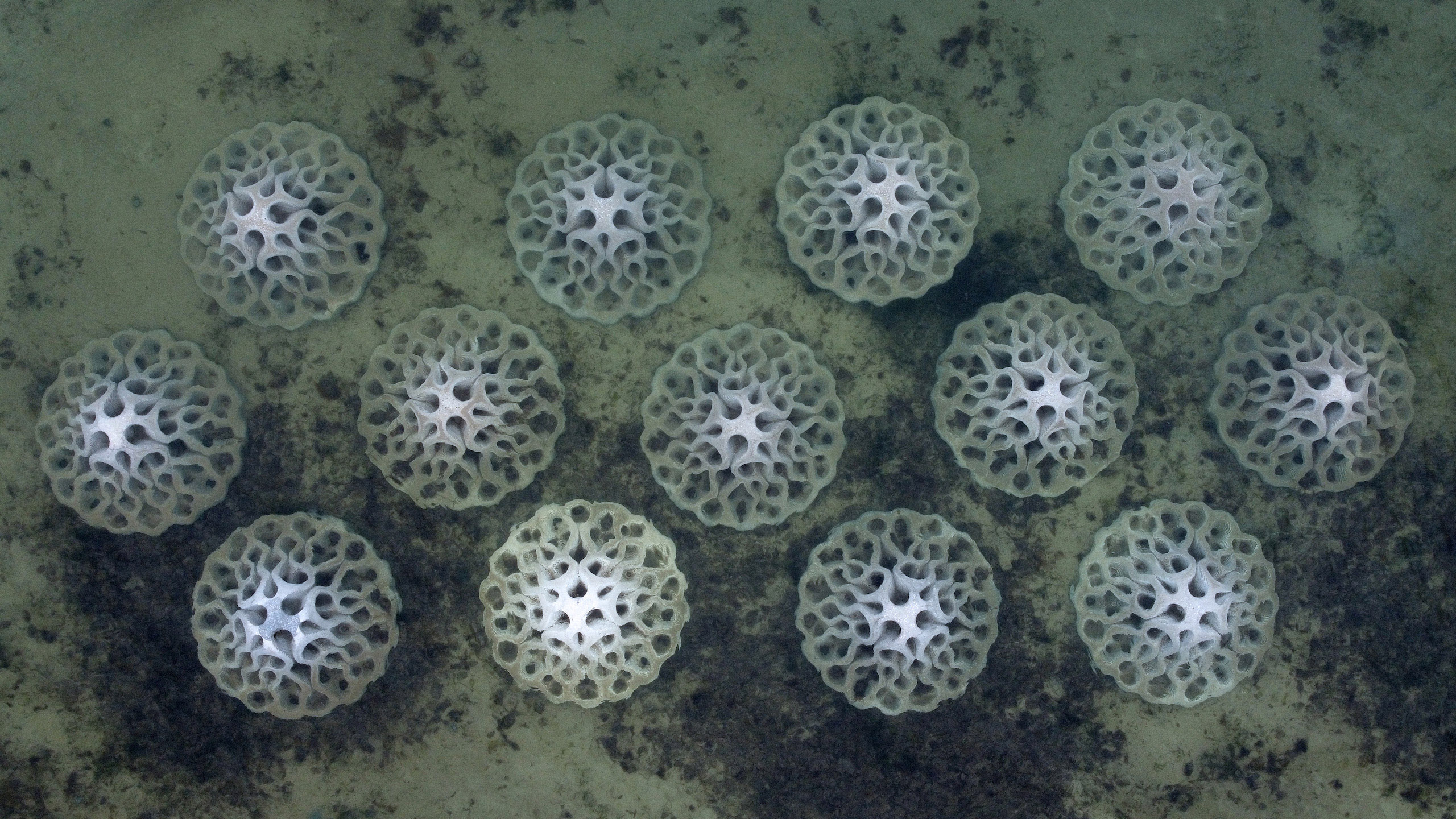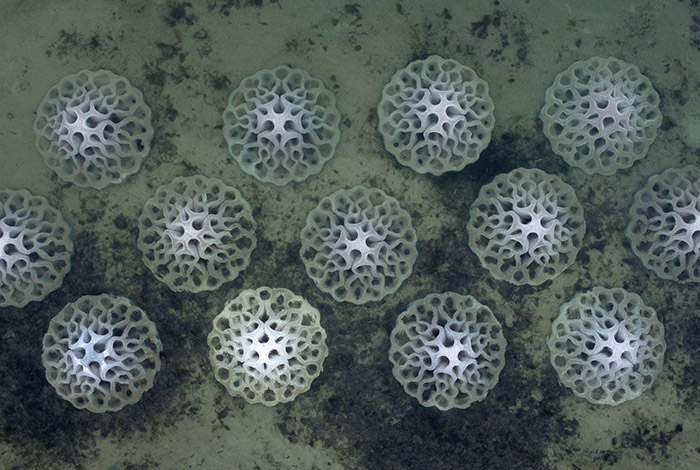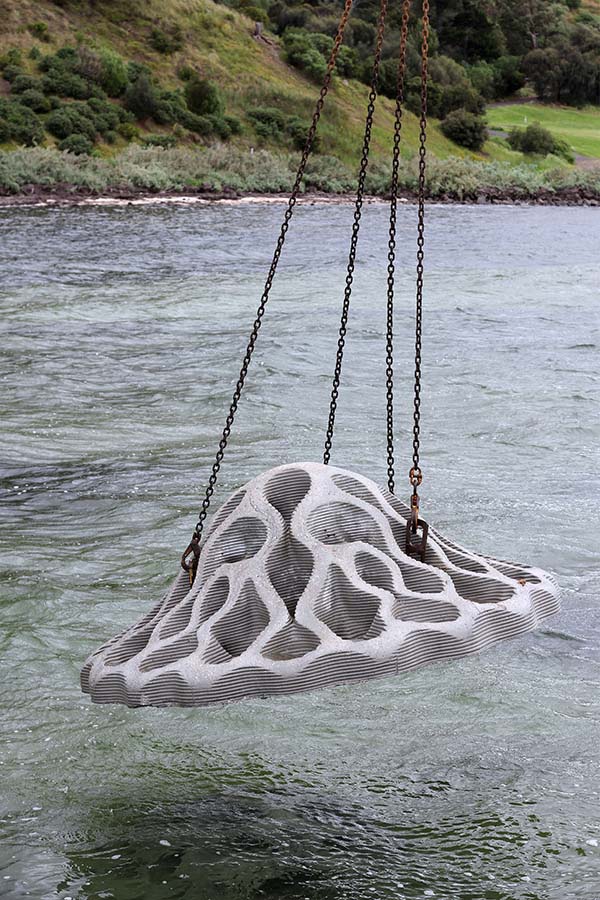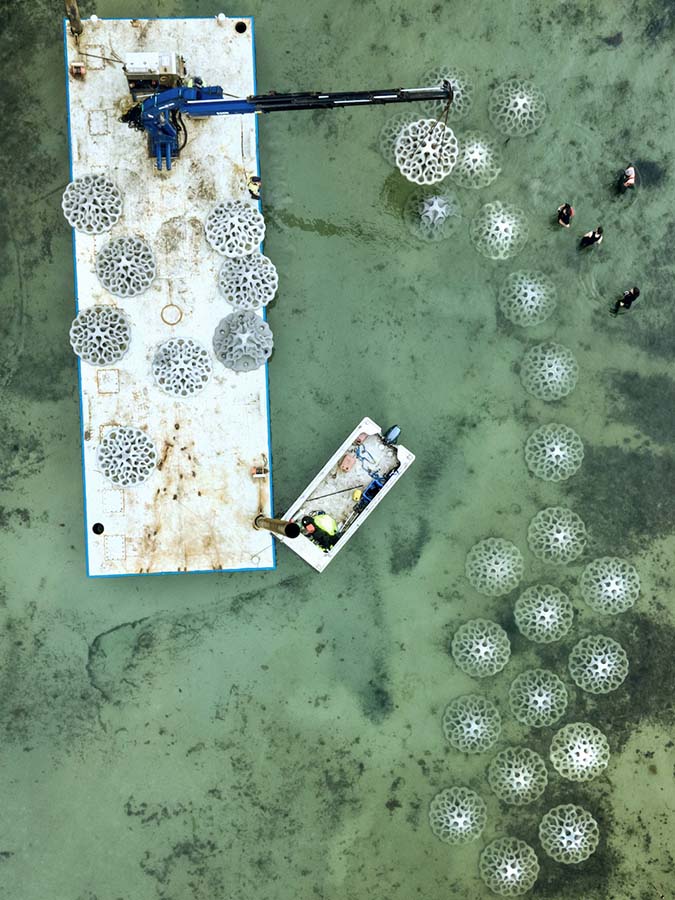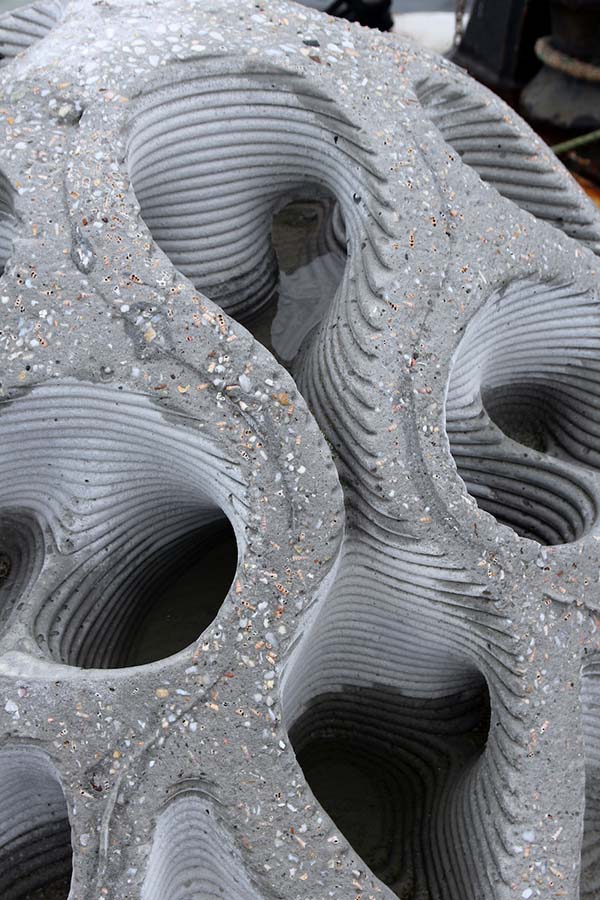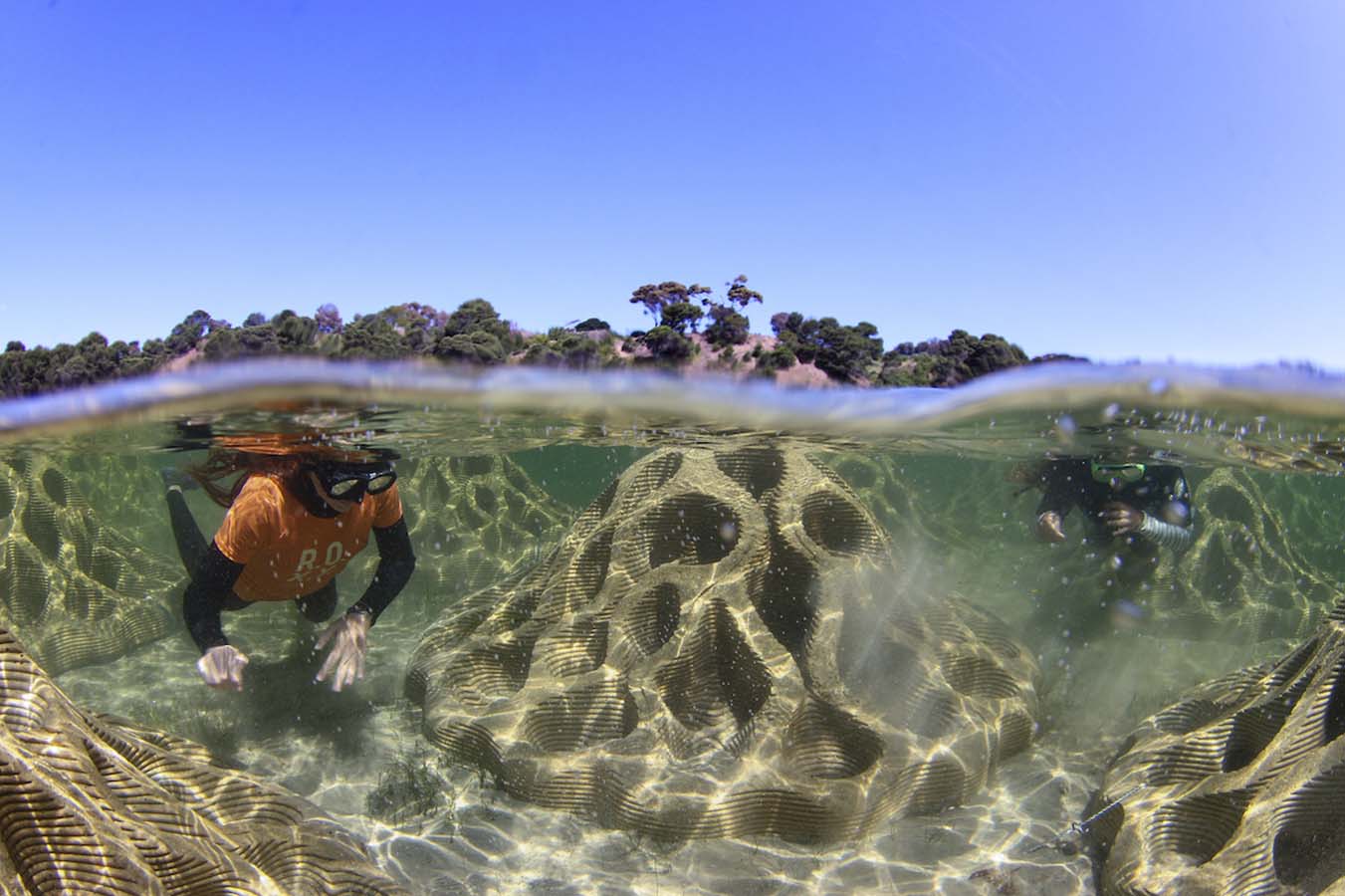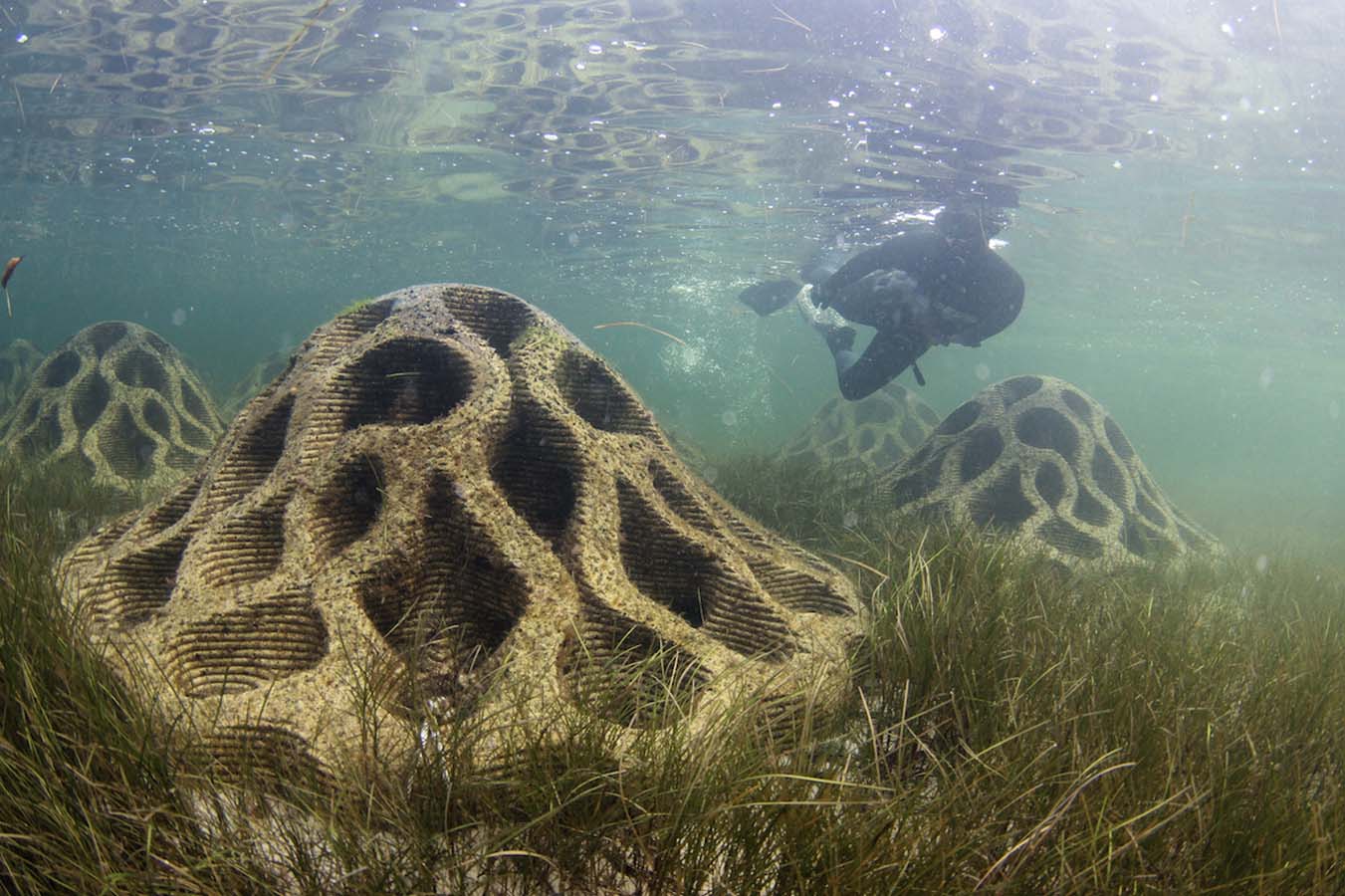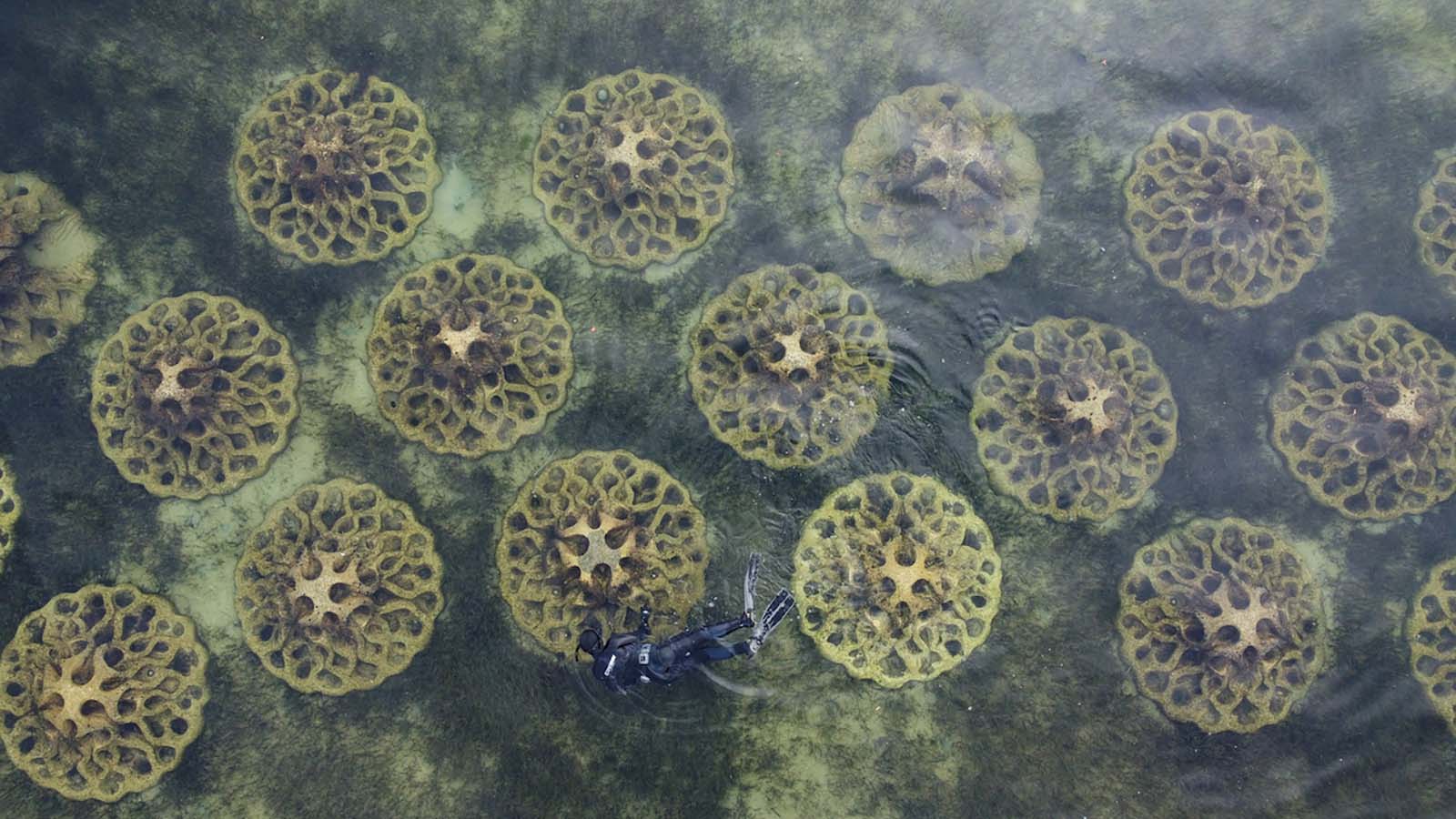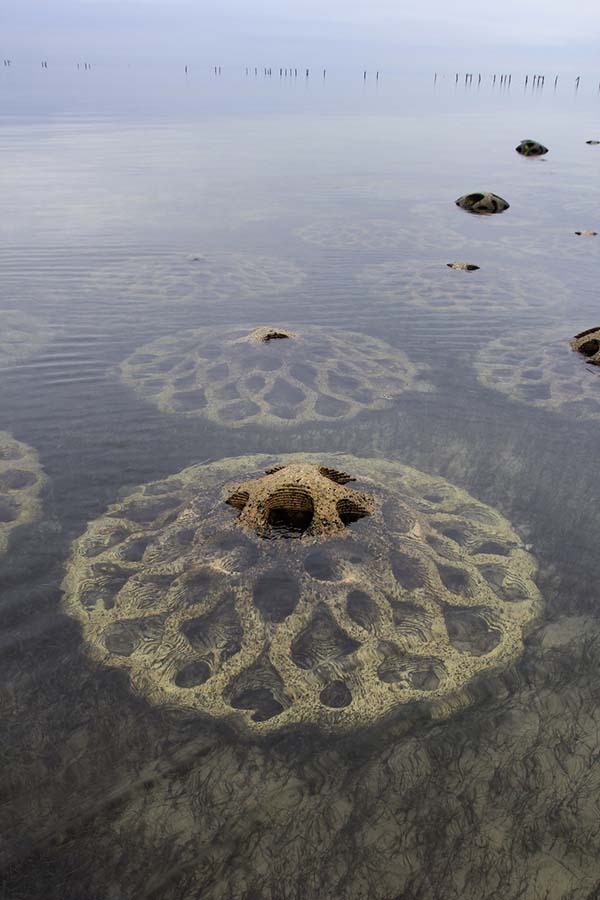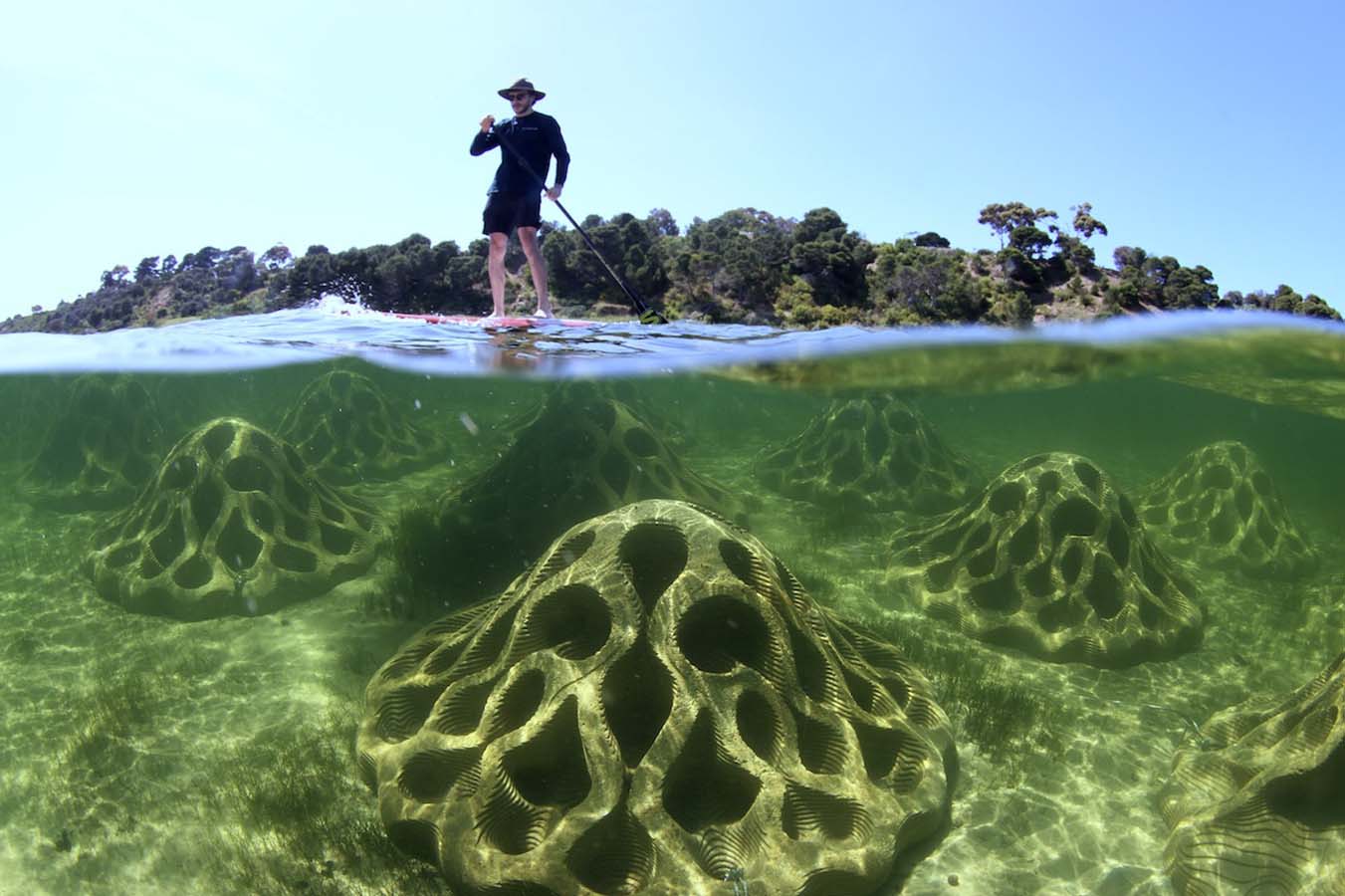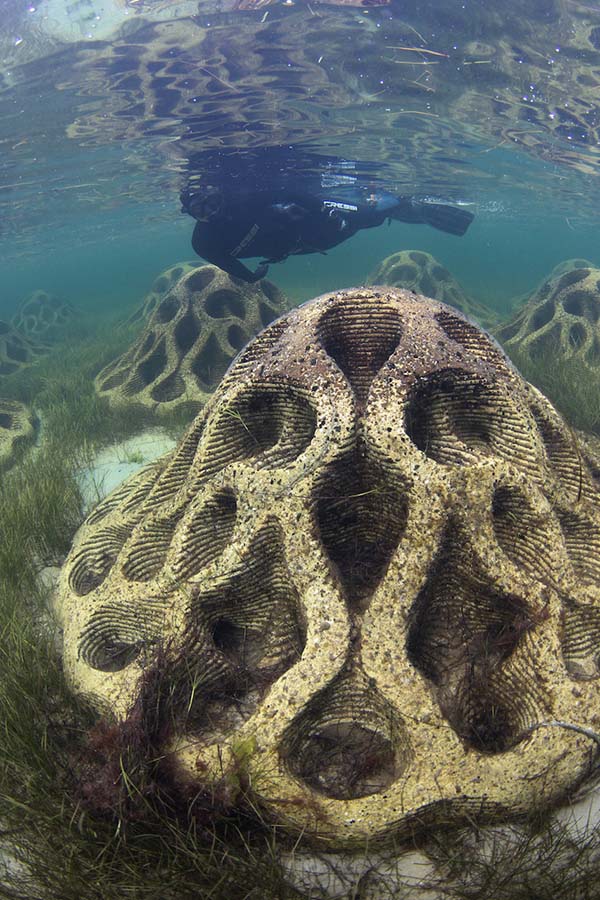From the very beginning a guiding principle was to not hide the fact the modules were artificial but rather develop an aesthetic that is sympathetic to the environment it is being placed. By creating curves and crevices the overall geometry replicates the complexity that is found on naturally occurring temperate reefs including caves, overhangs, crevices and textures. This complex habitat range allows for a more biodiverse ecosystem to develop which allows the installation to quickly blend into the environment over time.
Underwater sampling of rocky shoreline was performed by the RDL team using video and 3D scanning techniques to build a database of complex habitat naturally found in Port Phillip Bay. This information was used to develop the early geometry of the modules and informed the undulating nature which would make the system more interactive for swimmers.
During the design process we were able to perform wave modelling analysis on various designs arrays which led us to the final outcome. We also found that greater surface complexity was essential to meeting the wave attenuation goals. As safety standards for this type of interactive wave break don’t exist we needed to take on in house risk assessment. By using playground equipment standards we created geometries that wouldn’t allow swimmers to get stuck.
Stainless steel 316 reinforcing and swift lift system was included meaning the units could be easily lifted into position and shifted in the future which was critical in having permits approved for the first installation. This lifting design also provided significant on site cost savings for the client and the first installation of 46 modules were installed in under 6 hours.

